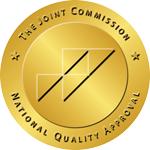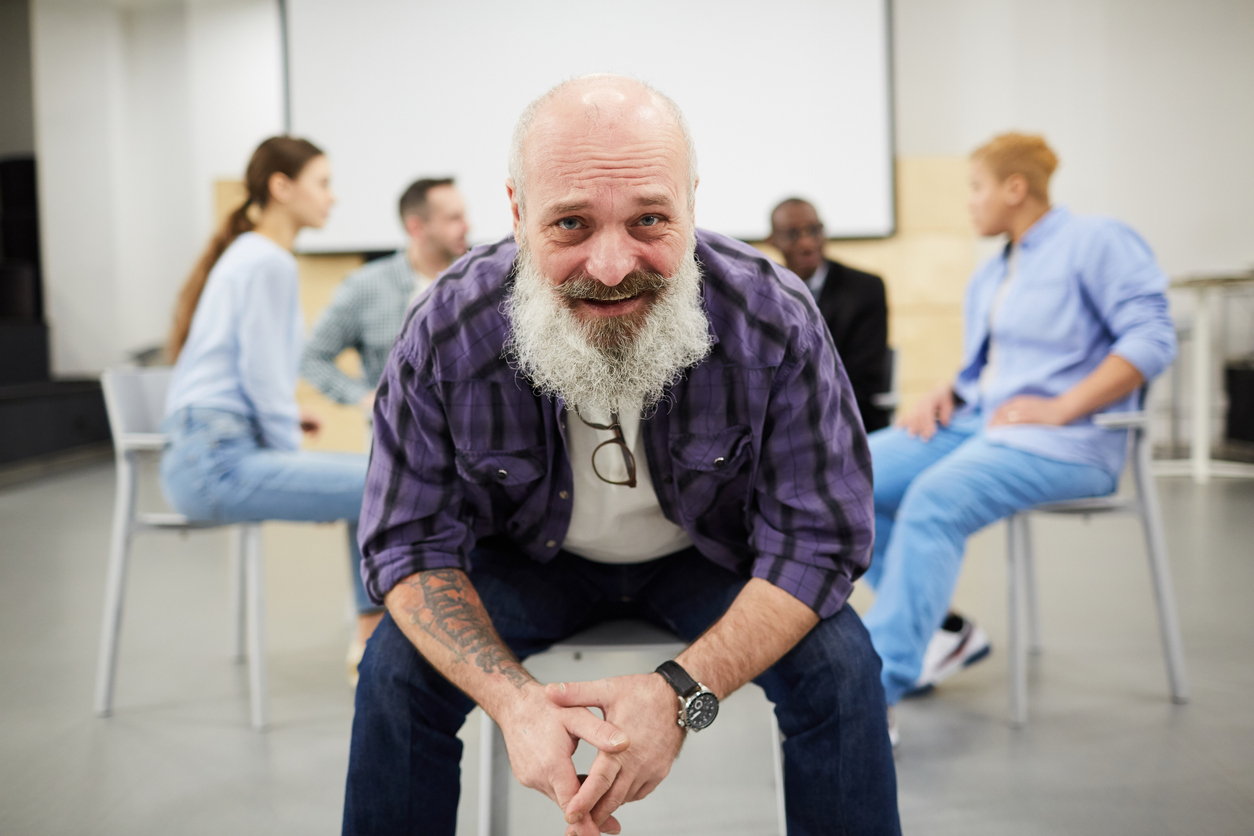In our recent article “Why Do People Fear Going to Rehab for Addiction?” we discussed several reasons people with alcohol and/or substance use disorder – a.k.a alcoholism and substance abuse – hesitate to participate in alcohol or drug rehab. We identified five main reasons people who need treatment are reluctant to seek treatment. Research shows that reluctance to seek treatment is often based on fear. When considering treatment, people fear:
- The unknown
- Living without alcohol or drugs
- Stigma associated with treatment
- Relapse
- The treatment process
The goal of this article is to address items one and five on this list: fear of the unknown and fear of the treatment process. To do this, we’ll describe how residential rehab for substance abuse works. We’re confident knowledge of how treatment works will change many of the unknowns into knowns, which, in turn, may help people make the decision to enter treatment and start the path to long-term recovery.
First, to ensure we’re on the same page, we’ll make an assumption: when most people think of alcohol and/or drug rehab, what they think of is residential treatment. Residential treatment comes in two forms: short-term and long-term. Data from the Substance Abuse and Health Services Administration (SMHSA) indicates the median length of stay in a short-term residential treatment program is 21 days, while the median length of stay in a long-term residential treatment program is 56 days. Therefore, for the rest of this article, what we mean when we say rehab or treatment or residential treatment is an onsite stay in a live-in, full time addiction program that lasts anywhere from three weeks to three months.
For the record, most short-term programs encourage participants to stay for 30-60 days, while long-term treatment programs encourage a stay of 180 days or more.
Residential Treatment: The Assessment Process
Once a person decides to seek treatment for alcohol or substance use disorder (AUD/SUD), an assessment process begins. The assessment process typically occurs in three phases or steps. Please note that the following is a general outline for how the assessment process happens in high-quality treatment centers. To learn about our assessment process, click here.
-
Step 1: Initial Screen.
- An initial screen can happen over the phone with an admissions counselor, with a primary care physician in a typical wellness checkup, with a mental health therapist or counselor, or with physicians or other licensed and qualified personnel in a hospital/emergency room setting. If an initial screen indicates the possibility of a substance use disorder, then the screener recommends a brief assessment.
-
Step 2: Brief Assessment.
- The brief assessment determines the possible severity of the substance use disorder. It identifies additional health, legal, or social problems associated with substance abuse. In addition, it gathers initial information on health and psychiatric history, current medications, and current medical conditions. At this point, the person seeking treatment and treatment center staff determine what level of care may be appropriate. We’ll assume, for the purposes of this article, that treatment center medical staff recommend residential treatment. But it’s possible they’ll recommend intensive outpatient treatment or partial hospitalization treatment. Those are two less intensive, but equally valid types of treatment programs.
-
- A comprehensive biopsychosocial assessment is exactly what it sounds like. Clinicians go in-depth. They develop a full picture of the biological, psychological, and social factors that may affect the alcohol/substance use disorder and its treatment. During this assessment, any co-occurring mental health disorders may be identified. In most cases, the full biopsychosocial assessment takes place at the treatment center after admission, within the first several hours of the treatment stay.
Once these steps are complete, clinical staff and the person seeking treatment create an individualized treatment plan. The plan reflects everything the clinicians learn during the assessment process and includes recommendations – based on their experience with the person seeking treatment – for a combination of therapeutic approaches that can lead to the greatest chance of long-term, sustained recovery.
With an individualized treatment plan in hand, the person seeking treatment begins treatment.
Residential Treatment: The Process
Detoxification
In some cases, an assessment indicates that medically supervised and/or medication-assisted detoxification is a necessary first step. Detoxification is the process of clearing alcohol and/or drugs of abuse and related toxins from the body so the person in treatment can begin with a clean slate. The length of the detox phase depends on the substance used, the amount and frequency of use, the age, and gender of the person seeking treatment, their current health status, and their medical history. Detox typically takes between two days and one week. The length of detox depends on the factors just mentioned.
Also, stopping the use of alcohol and some drugs sends the body into withdrawal. That’s why medically supervised or medication-assisted detox is necessary in some cases. Medical supervision ensures safety in the case of an emergency, and medication can help ease the uncomfortable physical symptoms of withdrawal.
Note: in some cases, alcohol withdrawal can be very dangerous. In some cases, it can lead to death. That’s not an exaggeration. We recommend anyone with a history of regular alcohol consumption consult with a medical professional before quitting. We’ll put that another way: in rare cases, quitting cold turkey can kill you. Therefore, the smartest thing to do – for someone with a history of regular and considerable alcohol consumption – is to talk to a doctor or addiction professional first.
Treatment Participation
After detox, the person in treatment joins the therapeutic community and begins participating in the treatment plan they created with clinicians during the assessment process. Residential treatment typically includes:
- Group therapy and counseling.
- Group therapy and counseling during substance abuse treatment takes many forms. Some group sessions are highly structured, clinical experiences led by therapists or counselors. Other group sessions may be less formal, peer-led, and involve recovery peers sharing experiences and offering advice about the recovery process. Group sessions may also be educational, rather than explicitly therapeutic. Educational sessions may include:
- The science of addiction
- The science of recovery
- How to identify and manage triggers (external cues that can lead to relapse)
- Relationship management
- Healthy eating
- Anger management
- Setting boundaries
- Seeking Safety
- Group therapy and counseling during substance abuse treatment takes many forms. Some group sessions are highly structured, clinical experiences led by therapists or counselors. Other group sessions may be less formal, peer-led, and involve recovery peers sharing experiences and offering advice about the recovery process. Group sessions may also be educational, rather than explicitly therapeutic. Educational sessions may include:
- Individual therapy and counseling.
- Like group therapy, individual therapy and counseling includes various approaches, which are determined by the clinical staff and included in the treatment plan. Individual therapy and counseling may include:
- Cognitive behavioral therapy
- Dialectical behavioral therapy
- Motivational interviewing
- Acceptance and Commitment therapy
- Attachment therapy
- Like group therapy, individual therapy and counseling includes various approaches, which are determined by the clinical staff and included in the treatment plan. Individual therapy and counseling may include:
- Family therapy.
- Most rehab centers recognize the importance of family dynamics in addiction and addiction treatment. In a nutshell, the rationale behind including the family in rehab is that to understand the person in treatment, therapists and clinical staff need to understand where they came from and how they became the person they are. In almost every case, this means understanding the family. Family therapy may include therapeutic and/or educational workshops on:
- Effective communication
- Codependency
- The science of addiction and recovery
- Boundary setting
- How to support a friend or loved one in recovery
- Most rehab centers recognize the importance of family dynamics in addiction and addiction treatment. In a nutshell, the rationale behind including the family in rehab is that to understand the person in treatment, therapists and clinical staff need to understand where they came from and how they became the person they are. In almost every case, this means understanding the family. Family therapy may include therapeutic and/or educational workshops on:
- Experiential therapies.
- Once in rehab, people realize that recovery is a lifelong process. They learn it will last long after their time on-site in a rehab center. Experiential therapies help people in recovery learn new skills, techniques, and lifestyle habits that support recovery. These therapies may be facilitated by licensed clinicians trained in things like music therapy or equine therapy (horses). Or, they may be facilitated by experts specific to that experiential approach. It’s important to understand experiential therapies augment, rather than replace, traditional therapies. Experiential therapies may include:
- General exercise: calisthenics, walking, jogging, aerobics, weight training, kickboxing – any form of exercise may be included.
- Mindfulness activities: meditation, yoga, tai chi, mindful eating, mindful walking.
- Outdoor experiences: hiking, cycling, or anything that gets people in treatment outdoors and active
- Sports: golf, tennis, volleyball, basketball – any activity that a treatment center has facilities to support or access to may be part of rehab
- Expressive therapies: writing, music, dance, and drama activities may be part of the rehab process
- Once in rehab, people realize that recovery is a lifelong process. They learn it will last long after their time on-site in a rehab center. Experiential therapies help people in recovery learn new skills, techniques, and lifestyle habits that support recovery. These therapies may be facilitated by licensed clinicians trained in things like music therapy or equine therapy (horses). Or, they may be facilitated by experts specific to that experiential approach. It’s important to understand experiential therapies augment, rather than replace, traditional therapies. Experiential therapies may include:
- Community Support.
- The support of a compassionate community of peers is an essential element of recovery. Evidence shows that adding just one sober peer to their social group increases the chances of long-term sobriety for a person in recovery. Community support groups may include:
- Alcoholics Anonymous
- Narcotics Anonymous
- SMART Recovery
- The support of a compassionate community of peers is an essential element of recovery. Evidence shows that adding just one sober peer to their social group increases the chances of long-term sobriety for a person in recovery. Community support groups may include:
Aftercare Planning and Discharge
Aftercare, also known as continuing care, means everything recovery or treatment-related that happens after official recovery is complete, i.e. after discharge. In collaboration with the person in recovery, clinicians create an aftercare plan that’s designed to help the person in recovery maintain their sobriety independently. Staff at high-quality treatment centers begin crafting an aftercare plan early in the treatment process, based on observation of what works and what does not work for each person.
- A good aftercare plan includes:
- Resources for ongoing treatment and regular doctor checkups. Ideally, these include names, times, and dates of individual therapy or other relevant addiction services, such as medication maintenance, if applicable.
- A list of lifestyle or experiential therapies that worked well, enhanced the treatment process, and may contribute to a long-term, successful recovery. For instance, if yoga made an impact on the person in treatment, then resources for local yoga studios – up to and including class dates and times – may be included in the aftercare plan. The same is true for any other experiential approaches that helped, such as meditation, sports, general exercises, or expressive therapies.
- Community support resources. Like the two components just mentioned, the best aftercare plans include specific dates and times for AA or NA meetings that are convenient for the person leaving treatment. In an ideal scenario, the person leaving treatment will already have an AA sponsor – in which case, the aftercare plan will include their phone number or relevant contact info.
It’s important to understand that in some cases, a person in treatment will not go directly back out into the world. They may step down to a less intensive level of care. For instance, a person may go from residential treatment to partial hospitalization treatment to intensive outpatient treatment to outpatient treatment over the course of six months or more. Decisions about what happens after residential treatment are made through a collaborative process that includes the person in treatment, their family members, treatment center staff and clinicians, and insurance providers.
How to Find a Residential Rehab Center
Since no two people are exactly alike, no two rehab experiences are exactly alike. The entire process is based on open, honest communication between the provider and the patient. This means that finding the best possible treatment center is similar to creating a treatment and implementing a treatment plan. It’s a collaborative process, based on factors specific to the individual. Location, type of program, insurance coverage, and treatment history all contribute to the final decision on which residential treatment program is the best fit.
Evidence shows that integrated, individualized programs that address biological, psychological, and social factors lead to the most successful outcomes. When seeking treatment for a loved one, a family member, or yourself, it’s crucial to research potential programs. Get on the phone, ask questions about everything we mention above – and when a potential match is found, make sure the treatment center is licensed, accredited, and has an experienced staff with specific training in addiction and recovery.
Treatment works – and the sooner a person who needs detox treatment for a substance use disorder gets treatment in a specialized alcohol or substance abuse rehab center, the greater their chances of achieving sustained, lifelong recovery. The Ridge offers inpatient, outpatient and partial hospitalization facilities to help all such individuals.


